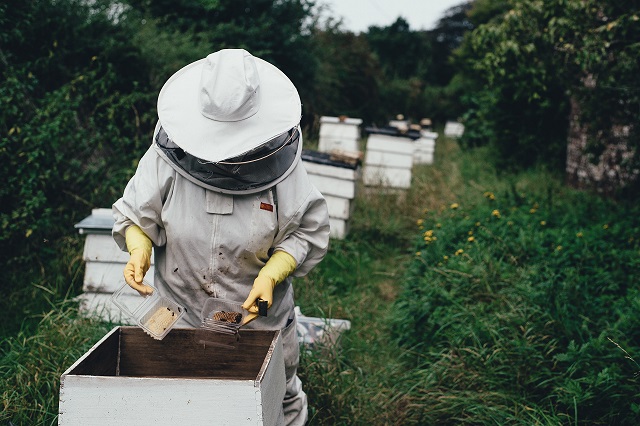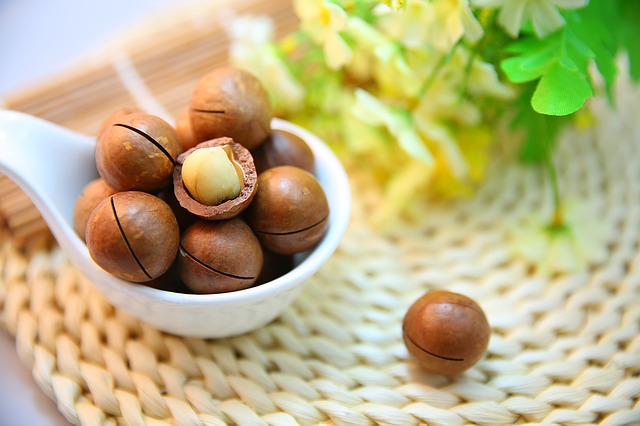Why every Macadamia Farmer needs a beehive
and the easiest way to build one
Beehive. It’s something most of us know of, and have probably seen once somewhere during our lives. It is also something we don’t really think about when we think about general farming like macadamia farming. But this small box, usually filled with liquid gold (honey), can be a simple factor that makes or breaks a farm. Why? Because bees are necessary to pollinate flowers, which in return then produces fruit.
But let’s start at the beginning, we’re going to tell you exactly why you need to invest in the proper materials to build a bee hive, why you need a bee hive and so much more! If you’re a farmer, you’re going to want to read this post!
Pollination
Pollination is the transfer of pollen to a stigma, ovule, flower, or plant to allow fertilization.
Pollination is something we all learned in primary school (hopefully), so we assume that you are familiar with the term. If not, here is a short video, explaining the basics of pollination:
Why is Pollination important?
As mentioned in the short video above, pollination is necessary for some (most) plants to reproduce and produce future generations of plants. Polliation also produces fruit, which farmers rely on for their income!
So if you thought that pollination might not be as important, think again!
It is vital for all living things to survive on earth!
Agents & Types of Pollination
Yes. it is important, but did you know that various plants need different conditions or agents of pollination? Here we’ll briefly explore these agents and types! (Information adapted from the video “What is Pollination?” from Urbanmali.com as above)
Types of Pollination
Pollination can occur in many different ways. If you’re a farmer, you have the responsibility to research the specific type of plant/vegetable/fruit you are farming with, to determine what type of pollination is suitable for your farm. The different methods are:
- Wind
- Water
- Pollination with the assistance of various natural “agents”
- Self-Pollination
Because we’re here to talk specifically about bee hives and how bees are beneficial to macadamia farmers, we’re not going to go into the details regarding self-pollination, wind, and water pollination.
However, we will briefly give an explanation of all the different agents that assist in this awesome process!

Agents of Pollination:
- Honey Bees (Flowers range in shape, color, and scent, bees are the most well-known pollinators and also produce honey as a by-product! Fun Fact: Most flowers pollinated by bees are yellow or blue)
- Butterflies (Butterflies loves bright colored flowers like pink, lavender or red)
- Bats (Usually pollinates flowers are white and has a musky odor at night)
Importance of Honey Bee in Agriculture
When you’re a farmer, specifically with orchards or any plant-based farm, you need to know the importance of attracting pollinators to your farm.
If you fail to do so, it can severely impact your fruit production and supply. Therefore, honey bees are some of the most valuable assets any farmer can have on their farm as it will continuously assist in getting your flowers pollinated and turned into delicious fruit.
Bees Matter put it very simply, but clearly when they said:
“It’s a coexistence that needs to be protected: honey bees need healthy crops and healthy crops need honey bees. In fact, the involvement of honey bees in the growth of crops is essential for farmers to maintain their livelihood, but it’s also necessary for people to keep enjoying the foods they love.”
Bee hive: Solution to get Honey Bees on farms
So now you know that it’s important. But you’re wondering how exactly you can get these honey bees on your farm. There is a simple solution that many farmers are starting to use in order to get better and healthier crops!
Farmers all over South Africa are starting to either buy or build their own bee hive on their farms and placing them in optimal areas so the bees can pollinate easily.
This solution works well for the farmer and the bees! Keeping the crops and hive healthy at the same time.

Why are South African Farmers starting to use this method?
As can be seen in Mpumalanga (As at the time of writing this article 2018), many farmers are starting to replace their eucalyptus trees and other fruit bearing trees for Macadamia Trees.
While this is a sound investment for many farmers, there is a gradual problem arising on most farms: A lack of pollination.
Macadamia trees, like most other plants, need agents of pollination to assist the trees in producing nuts. As the strong, fragrant blossoms of the eucalyptus trees are being removed, the bees are moving with them. This is quickly becoming a major issue.
Therefore, farmers are making use of pollinators on their farms (by placing bee hives on their farm) to assist the trees and the bees!
Basic Tips for Macadamia Farmers wanting bee hives for pollination:
- At least two colonies are required to pollinate one hectare of trees
- Hives must be placed near the center of the orchard
- Remove all weeds in the orchard, as this might attract the bees more than the macadamia tree.
- Hives should be placed where they’ll receive early morning and late afternoon sun.
- Five to eight hives/ha is optimal, depending on the tree density
Tips adapted from Farmers Weekly.
Types of Bee hives
While you might think beekeeping is as simple as placing a box between your trees, there might be a bit more to it!
There are there main types of bee hives that are most commonly used in beekeeping all around the world:
“In modern beekeeping, a Langstroth hive is any vertically modular bee hive that has the key features of vertically hung frames, a bottom board with entrance for the bees, boxes containing frames for brood and honey (the lowest box for the queen to lay eggs, and boxes above where honey may be stored) and an inner cover and top cap to provide weather protection” –Wikipedia

“The top bar hive is the oldest and most commonly used hive style in the world. It features individual bars laid across the top of the hive cavity. The bees build their comb down from these bars naturally, without the use of a 4 sided frame or foundation. Generally, the bars are a wooden wedge or strip with a guide to ensure combs hang straight.” -Bee Built

-
Warre Hive
“The Warre Hive comprises tiers of identical boxes fitted with top-bars, but no frames.”- The Bee Space

As a farmer, you have full reign on which hive design you choose.
Practically, you would look for a hive that is low maintenance, not heavy lifting and something you can put on wooden stilts so the bees won’t be bothered by any bee-eating animals or prying humans!
For this, we suggest the Warre Hive! But remember to always do your own research to see what will suit you and your farm!
Bee hive plans and designs
Warre Bee hive: Click here to download plan/design
Top Bar Bee hive: Click here to download plan/design
Langstroth Bee hive: Click here to download plan/design
We understand that sometimes people like to deviate from the norm, and ty something new! Therefoe, we urge you to visit Morning Chores for an extensive list of DIY Bee hives with plans and advice!
Building materials for your own bee hive
As a farmer, you are looking at different goals than a beekeeper. You are bringing the bees closer to your crops for pollination, and not keeping bees to extract honey (Although honey definitely is a sweet byproduct of this transaction between you and the honey bees).
Therefore, you won’t be looking at traditional plans and goals as beekeepers do.
You will be looking at optimal temperatures, locations and keeping the bees safe from possible dangers.

Prevent your bee hives from looking as worn down as the hives showed in the picture above by using the correct building materials that won’t be affected by the natural deteriorating factors.
Therefore, when a farmer is looking at starting his own bee hive for pollination, it’s wise to look at placing these hives on stilts away from ground-predators.
Disturbing the bees (As a farmer, not a beekeeper) isn’t something you’d want to be doing on a regular basis. Using CCA Treated Timber allows you to let the bees do their thing without worrying that you bee hive might be falling apart due to weather conditions and other wood deteriorating factors.
CCA Treated timber comes in a wide list of sizes and prices. Enough to suit every farmer’s budget.
Materials for beekeeping/bee hives available at Sabie Poles:
- CCA Treated Poles (Variety of Sizes and lengths)
- CCA Treated Pine and Eucalyptus
Why use CCA Treated Timber for your bee hive?
- Weather Resistant
- 15-year Guarantee on treated timber
- Make use of Treated Eucalyptus or Pine
- Locally available at selected stores all over Southern Africa (Contact us to inquire about a shop near you)
- Using Locally grown, harvested and treated timber
At Sabie Poles, we are passionate about helping South Africa’s farmers! If you have any further questions regarding our extensive product list, you can leave us a message and we’ll get back to you as soon as possible!
Otherwise, you can head on over to our price list page and download our latest price list!
[contact-form-7 id=”813″ title=”MAIN_Contact Form”]


